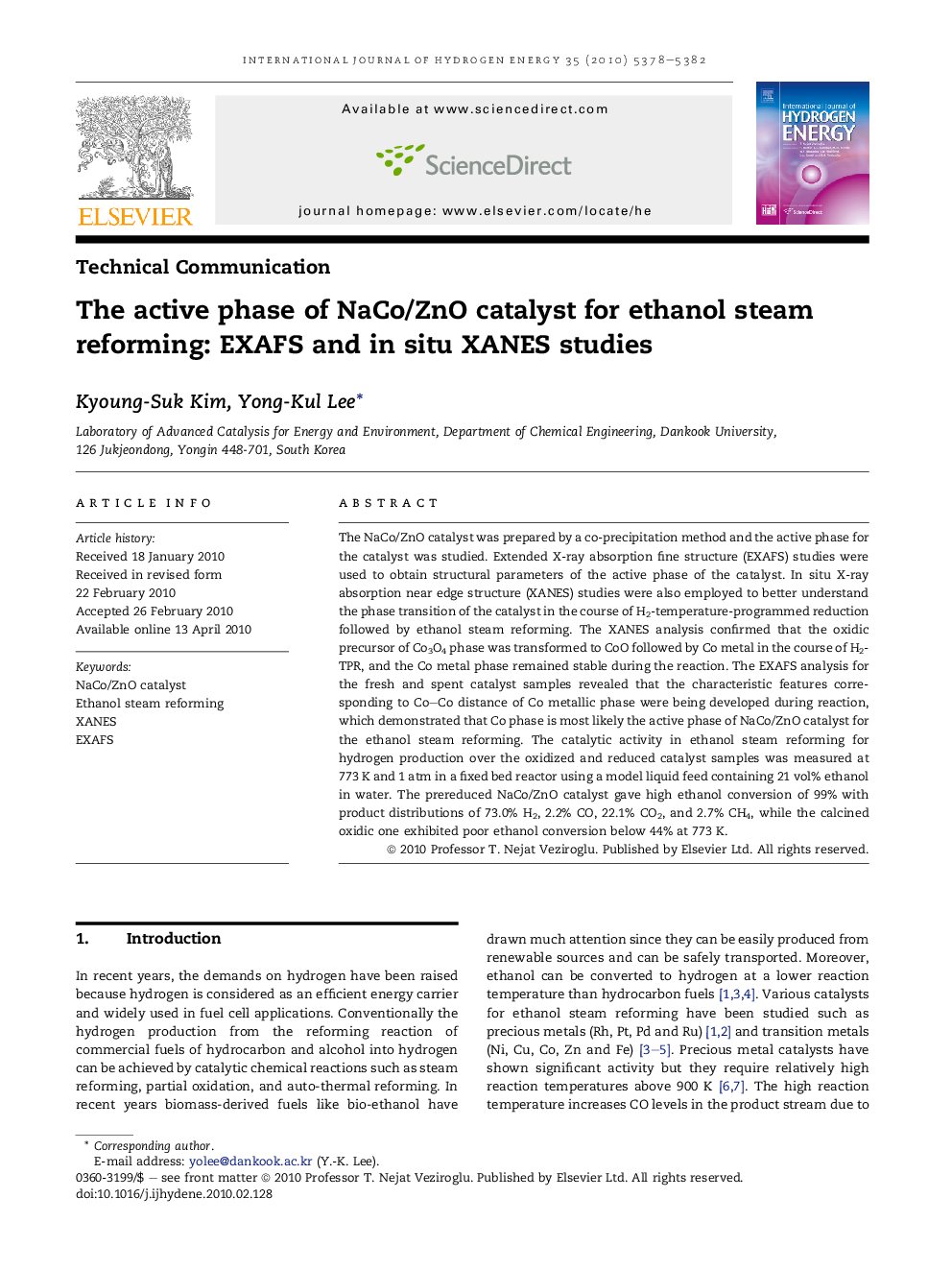| Article ID | Journal | Published Year | Pages | File Type |
|---|---|---|---|---|
| 1280558 | International Journal of Hydrogen Energy | 2010 | 5 Pages |
The NaCo/ZnO catalyst was prepared by a co-precipitation method and the active phase for the catalyst was studied. Extended X-ray absorption fine structure (EXAFS) studies were used to obtain structural parameters of the active phase of the catalyst. In situ X-ray absorption near edge structure (XANES) studies were also employed to better understand the phase transition of the catalyst in the course of H2-temperature-programmed reduction followed by ethanol steam reforming. The XANES analysis confirmed that the oxidic precursor of Co3O4 phase was transformed to CoO followed by Co metal in the course of H2-TPR, and the Co metal phase remained stable during the reaction. The EXAFS analysis for the fresh and spent catalyst samples revealed that the characteristic features corresponding to Co–Co distance of Co metallic phase were being developed during reaction, which demonstrated that Co phase is most likely the active phase of NaCo/ZnO catalyst for the ethanol steam reforming. The catalytic activity in ethanol steam reforming for hydrogen production over the oxidized and reduced catalyst samples was measured at 773 K and 1 atm in a fixed bed reactor using a model liquid feed containing 21 vol% ethanol in water. The prereduced NaCo/ZnO catalyst gave high ethanol conversion of 99% with product distributions of 73.0% H2, 2.2% CO, 22.1% CO2, and 2.7% CH4, while the calcined oxidic one exhibited poor ethanol conversion below 44% at 773 K.
